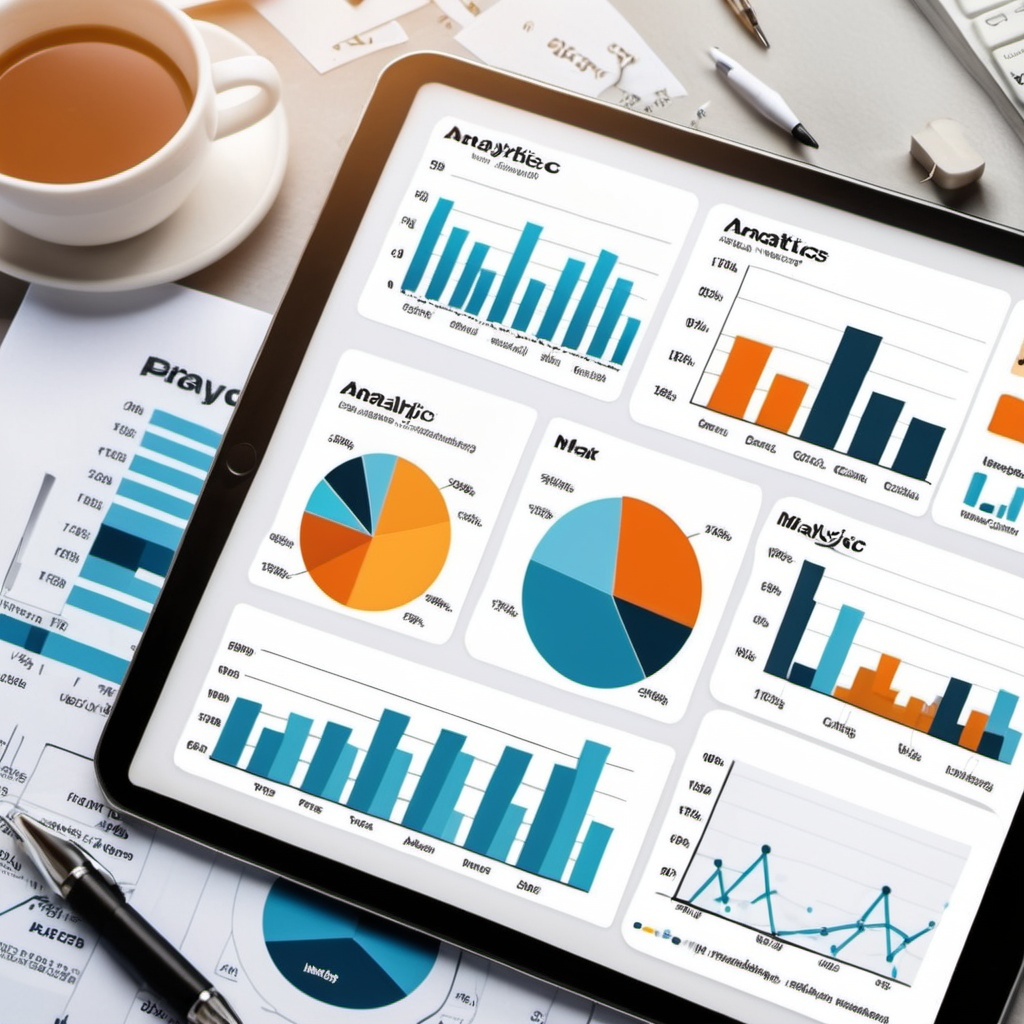
In the rapidly evolving world of digital marketing, analytics and data tracking have emerged as essential tools for businesses aiming to thrive in competitive markets. Understanding how to collect, analyze, and leverage data allows companies to make informed decisions, optimize strategies, and ultimately drive growth. This article delves into the importance of analytics and data tracking, the key metrics to monitor, the tools available, and best practices for implementation.
What Are Analytics and Data Tracking?
Analytics refers to the systematic computational analysis of data. In the context of digital marketing, it encompasses the methods and technologies used to gather and interpret data from various digital platforms, including websites, social media, and email campaigns. Data tracking involves the process of collecting this data over time, providing businesses with insights into user behavior, preferences, and trends.
Web Design for Beginners: Easy Website Development
Build a Professional Website or Blog for Just $100!
The Importance of Analytics and Data Tracking
- Informed Decision-Making: Data-driven decisions are more likely to yield positive results than decisions based solely on intuition. By analyzing data, marketers can identify what works and what doesn’t, enabling them to allocate resources more effectively.
- Understanding Customer Behavior: Analytics helps businesses understand how customers interact with their products or services. Insights gained from tracking data can inform marketing strategies, product development, and customer service improvements.
- Optimizing Marketing Strategies: With precise data, marketers can test and optimize campaigns, ensuring that they reach the right audience with the right message at the right time.
- Measuring ROI: Analytics provides the tools necessary to assess the effectiveness of marketing initiatives. By tracking performance metrics, businesses can evaluate return on investment (ROI) and make necessary adjustments to maximize profitability.
- Competitive Advantage: Companies that leverage data effectively can gain insights into market trends and consumer preferences, giving them a competitive edge over those that do not.
Key Metrics to Monitor
To maximize the benefits of analytics and data tracking, businesses should focus on several key performance indicators (KPIs):
- Website Traffic: The number of visitors to a website can provide insights into the effectiveness of marketing strategies and content.
- Conversion Rate: This metric measures the percentage of users who complete a desired action (e.g., making a purchase, signing up for a newsletter) compared to the total number of visitors.
- Bounce Rate: A high bounce rate indicates that visitors are leaving the site quickly, suggesting that the content may not meet their expectations or needs.
- Average Session Duration: This metric indicates how long users stay on a website, reflecting engagement levels and the relevance of content.
- Customer Acquisition Cost (CAC): This metric calculates the cost associated with acquiring a new customer, helping businesses evaluate the efficiency of their marketing efforts.
- Return on Investment (ROI): Understanding the ROI for various campaigns is crucial for assessing overall effectiveness and profitability.
- Customer Lifetime Value (CLV): This metric estimates the total revenue a business can expect from a single customer throughout their relationship, guiding marketing spend and strategy.
Tools for Analytics and Data Tracking
Numerous tools are available for businesses looking to implement analytics and data tracking effectively. Some popular options include:
- Google Analytics: A powerful and widely-used tool, Google Analytics provides insights into website traffic, user behavior, and campaign performance. Its robust reporting features allow for detailed analysis and tracking.
- HubSpot: HubSpot offers comprehensive marketing analytics tools that track performance across various channels, including social media, email, and content marketing.
- Adobe Analytics: A part of the Adobe Experience Cloud, this tool provides advanced analytics features, including segmentation, predictive analytics, and custom reporting.
- Facebook Insights: For businesses focusing on social media marketing, Facebook Insights offers detailed data on user engagement and post-performance.
- Hotjar: Hotjar combines analytics with user feedback tools, providing heatmaps, session recordings, and surveys to help understand user behavior.
Blog Writing & SEO Optimization Services
Monthly Social Media Management Services
Best Practices for Implementing Analytics and Data Tracking
- Define Clear Objectives: Before implementing any tracking tools, businesses should establish clear goals for their analytics efforts. Understanding what to measure and why helps focus data collection and analysis.
- Choose the Right Tools: Select tools that align with your business needs and objectives. Consider factors such as ease of use, scalability, and integration capabilities.
- Segment Your Data: Analyzing data in segments (e.g., by demographics, location, or behavior) can provide more meaningful insights than aggregated data.
- Regularly Review and Analyze Data: Set a routine for reviewing analytics data. Regular analysis helps identify trends and patterns that may not be immediately apparent.
- Adjust Strategies Based on Insights: Use the insights gained from data analysis to adjust marketing strategies, improve user experience, and enhance overall performance.
- Ensure Data Privacy and Compliance: Be mindful of data privacy regulations, such as GDPR and CCPA. Implement measures to protect user data and maintain transparency in how data is collected and used.
Analytics and data tracking are no longer optional in the digital marketing landscape; they are essential components for success. By understanding and leveraging data, businesses can gain valuable insights into customer behavior, optimize their marketing strategies, and ultimately drive growth. As technology continues to evolve, staying informed about the latest tools and practices will enable businesses to remain competitive and responsive to changing market dynamics. In a data-driven world, those who harness the power of analytics will be well-positioned to thrive.